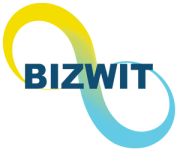Global Opioid Use Disorder (OUD) Market is valued at approximately USD 2.88 billion in 2021 and is anticipated to grow with a healthy growth rate of more than 8.9% over the forecast period 2022-2029. Opioids are a class of analgesics that also relax muscles, lessen pain, and ease stress. For the treatment of moderate to severe pain, prescriptions are written for drugs including morphine, hydrocodone, oxycodone, codeine, fentanyl, methadone, and other pharmaceutical opioids. Opioid use disorder (OUD) is a long-term, relapsing brain condition defined by excessive opioid use, despite adverse effects. It is classified as a brain condition because it involves functional adjustments to brain circuits associated with motivation, stress, self-control, and decision-making and because such adjustments often last for a long period after drug use has stopped. Opioid use disorder is characterized by an intense desire to take opioids, a rise in opioid tolerance, and withdrawal symptoms following discontinuation. The market growth is primarily driven by the factors such as growing focus of government & non-government institutions, increasing incidences of chronic diseases including cancer, cardiovascular diseases and orthopedic diseases, coupled with the surge in the incidence of surgical intervention.
The rising cases of opioid addiction and related consequences are burgeoning the market demand across the globe. The National Drug Dependence Treatment Centre’s (NDDTC) Magnitude of Substance Use in India reported that in February 2019, the prevalence of current opioid use is 2.06%, and approximately 0.55% of Indians are expected to require treatment for opioid use disorders (harmful use and dependence). Also, as per the Centers for Disease Control and Prevention, in 2020, there were nearly 91,799 people died from drug overdoses in the US. Age-adjusted overdose death rates increased from 21.6 per 100,000 in 2019 to 31.1 per 100,000 in 2020. (28.3 per 100,000). Thus, these aforementioned factors are acting as catalyzing factors for market growth at a significant rate. Moreover, the rising product launch and product approval for opioid use disorder drugs, as well as the growing investment in R&D activities are presenting various lucrative opportunities over the forecasting years. However, the complex reimbursement structure and adverse effects of OUD drugs are challenging the market growth throughout the forecast period of 2022-2029.
The key regions considered for the Global Opioid Use Disorder (OUD) Market study include Asia Pacific, North America, Europe, Latin America, and the Rest of the World. North America dominated the market in terms of revenue, owing to the rising number of government policies, along with increasing new product launches in the region. Whereas, the Asia Pacific is also expected to grow with the highest CAGR during the forecast period, owing to factors such as the high presence of patients suffering from opioid dependency, growing awareness amongst the general population regarding OUD, and increasing expenditure on healthcare in the market space.
Major market players included in this report are:
MediciNova
Indivior PLC
Alkermes
Orexo AB
Titan Pharmaceuticals, Inc.
Mallinckrodt Pharmaceuticals
BioDelivery Sciences International Inc.
Viatris Inc. (Mylan N.V.)
Hikma Pharmaceuticals PLC
Camurus
Recent Developments in the Market:
Ø In February 2021, Orexo AB unveiled that the company entered into a collaborative agreement with ApexB.io and Magellan Rx Management in order to do further study on the usage of Modi. This product is a specially designed digital therapeutic for patients with Opioid Use Disorder.
Global Opioid Use Disorder (OUD) Market Report Scope:
Historical Data 2019-2020-2021
Base Year for Estimation 2021
Forecast period 2022-2029
Report Coverage Revenue forecast, Company Ranking, Competitive Landscape, Growth factors, and Trends
Segments Covered Drug Class, Route of Administration, Distribution Channel, Region
Regional Scope North America; Europe; Asia Pacific; Latin America; Rest of the World
Customization Scope Free report customization (equivalent up to 8 analyst’s working hours) with purchase. Addition or alteration to country, regional & segment scope*
The objective of the study is to define market sizes of different segments & countries in recent years and to forecast the values to the coming years. The report is designed to incorporate both qualitative and quantitative aspects of the industry within countries involved in the study.
The report also caters detailed information about the crucial aspects such as driving factors & challenges which will define the future growth of the market. Additionally, it also incorporates potential opportunities in micro markets for stakeholders to invest along with the detailed analysis of competitive landscape and product offerings of key players. The detailed segments and sub-segment of the market are explained below:
By Drug Class:
Buprenorphine
Methadone
Naltrexone
By Route of Administration:
Home
Dentistry
By Distribution Channel:
Hospital Pharmacies
Retail Pharmacies & Stores
Online Pharmacies
By Region:
North America
U.S.
Canada
Europe
UK
Germany
France
Spain
Italy
ROE
Asia Pacific
China
India
Japan
Australia
South Korea
RoAPAC
Latin America
Brazil
Mexico
RoLA
Rest of the World



